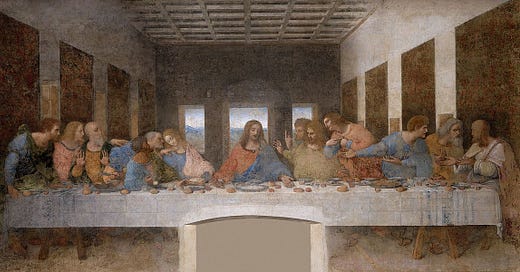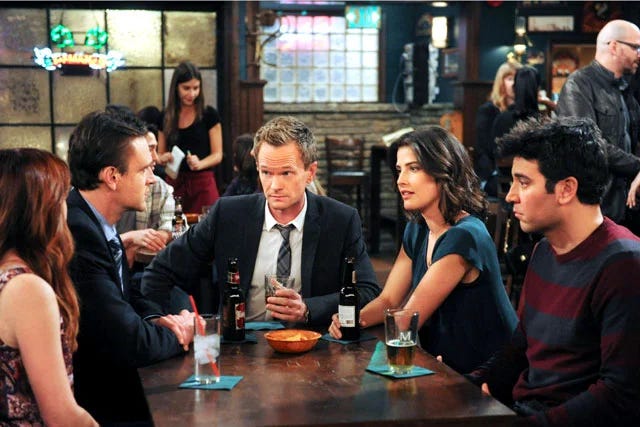Third place ~ the magic of the hangout spot
Home is where we find comfort and work is where we build finances, but where do we create connections and sustain community?
Growing up, there may have been a community centre where you learned to swim, a church group you saw your friends at every Wednesday, or maybe the big courtyard everyone hung out in after school.
This place held the magic of the hangout spot.
If home is the first place, and work is the second, then this is the third place.
A third place is a place where you routinely spend time; where you can hang out, be yourself, and see familiar and fresh faces.
The concept was coined by sociologist Ray Oldenburg in his book The Great Good Place and refers to places where people spend time between home and work. They are locations where we exchange ideas, have a good time, and build relationships.
Examples of third places include coffee shops, community centres, churches, libraries, gyms, bookstores, and parks.
Sitcom storylines often centre around a third place, such as MacLaren’s Pub in How I Met Your Mother, or Central Perk in Friends. Third places are anchors of community life and facilitate and foster broader, more creative interaction.
According to Oldenburg, whose 1989 book initially titled The Great Good Place: Cafes, Coffee Shops, Community Centers, General Stores, Bars, Hangouts, and How They Get You Through the Day suggests that for a healthy existence, citizens must live in a balance of three realms: home life, the workplace, and the inclusively sociable places.
He points out that beyond the personal benefits they offer, they also contribute to the greater good. He cites that historically, many of the great revolutions and advancements in society featured the gathering of citizens at a third place, i.e.: the French cafe in the French Revolution, or the London coffee house during the Enlightenment.
Unfortunately, many of us have experienced the deterioration of community life as we’ve grown, and find that no matter how much time we put into nurturing our home and work life, there is still a missing piece.
We feel this void because humans have a need for belonging, and community gathering is an important source of social connection and establishing a sense of belonging.
The decline in community and third places may be due to a combination of factors including transitions from childhood to adulthood, urban planning, pandemic isolation, generational shifts from organized religion, demands of modern work life, and digitalization and social media.
In many cases, the lines between the first and second place have become blurred as working hours increase and work-from-home becomes more popular. This can limit the time available to participate in third places and community activities.
In his book, Oldenberg asserts that mass media provides so much entertainment and information that they encourage people to stay at home. Since “time spent in isolation is time lost to affiliation” this means a drop in social capital (p. 77). Social media was created to fill the gaps in socializing but has in many ways taken the place of genuine socialization.
We are content with knowing what our friends are up to by passively checking on their posts and stories without the conscious effort and outcomes of active interaction. Studies have found that online communal interactions do not have the same mental and physical health benefits that in-person community has.
As time goes on, it can be difficult to find a third place you can regularly visit without regularly spending money. With rising costs, some might opt to stay home more often to avoid spending money.
How do we bring back this sense of community, and revive the magic of the third place?
I wish I could give a straightforward answer, but I’m still figuring that out.
What I know is that the times in my life when I had access to a third place happened to be when I was happiest, regardless of my other life circumstances.
Change is a constant in life. Relationships end, loved ones pass, we move homes, lose jobs and search for new ones. The community we build in third places can offer support and connection when all else fails.
Community is essential to the health of human beings. If a person is not around people who care about them or for whom they have social connections, it can result in social isolation and emotional harm.
If you find the idea of a third place important and would like to incorporate it, I encourage you to think about how.
Some ideas I can provide include spending time at your local library, bookstore, or community centre, anywhere you could help revive existing third places.
Common interest or belief + a space to come together to share these ideas or beliefs= third place
If you have the appropriate physical space you could host events or gatherings with people who share a common interest or belief with you.
If you don’t have a space, event management sites like Eventbrite offer many events and activities. Search for something you’re interested in like writing or art classes, and you’ll find dozens of events in your area. Attending events and engaging with fellow participants can lead to meaningful connections.
If there are no third places around that interest you, how can you create one? If you are into poetry, is there a coffee shop nearby that would host a poetry night for you? Is there a space where you can host music-listening parties? A free or by donation drop-in yoga night each week? If you’re a designer, how can you design inclusive spaces?
In summary, third places are a vital aspect of building communities where people feel accepted and fulfilled in their needs of belonging.
By attending and supporting your local third places such as community centres, libraries, cafes and bookstores, you can help establish and grow these places. Advocate for public spaces, attend and help clean up after events, and donate or support financially when you can.
I hope this newsletter leaves you with a reminder of the importance of community and third places. It’s motivated me to be more active in seeking new ways to foster connection and finding ideas for cultivating third places I would like to be a part of.
The more we invest in our third places or create new ones for our community, the healthier and better connected we will all be. You might meet your new best friend, gain valuable insights about yourself, or discover a world-changing idea.
Remember, much of what we see with our two eyes was once an idea in someone’s mind. Your ideas have the power to create change and build the worlds you wish to be part of.
Discussion
Do you have a third place? If so, what is it? How can you find ways to be active in your community or create a new third place?
Thank you for reading and being here, please feel free to share this newsletter with your friends and family.









Thank you jasmine I really enjoyed your writing
this was such a good read. third places and fostering communities really do and can start with us 🥹